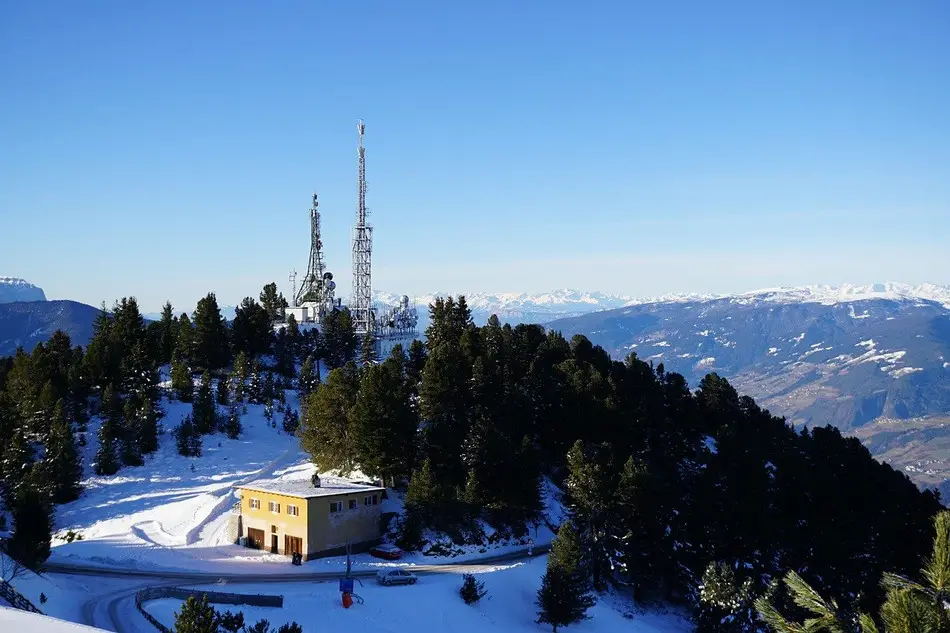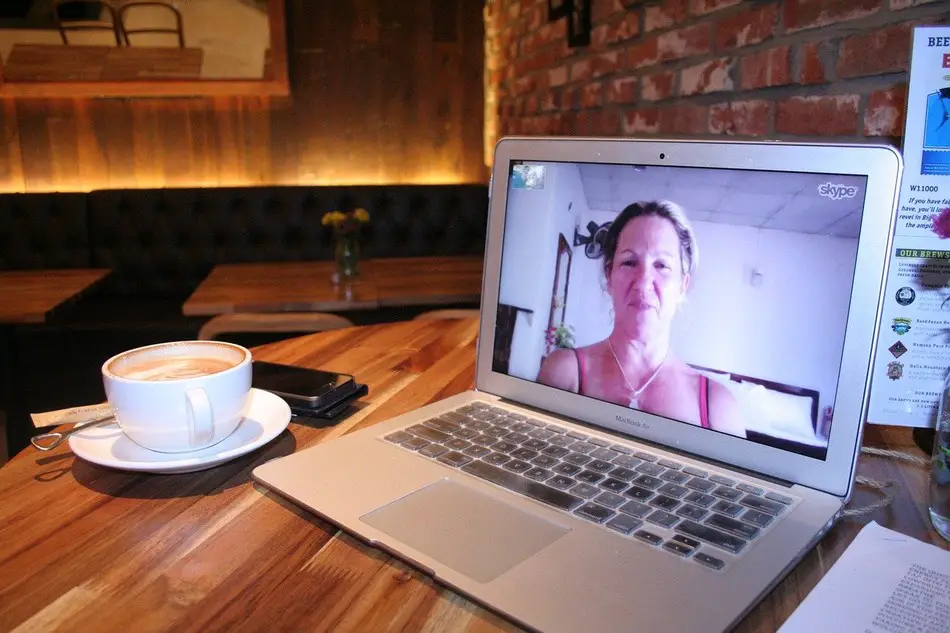Deciding that you are going off the grid does not entail completely removing yourself from the civilized world. The off-grid life is a green, healthy, more independent lifestyle, but it does not mean that you revert to barbarism. You can still fully enjoy an access to the Internet and to the wealth of information, people and services it provides. Off grid Internet is real and entirely achievable, even if you reside in a remote region of your country.
So what are the ways to stay connected with the off grid Internet? The short answer is that you can get an off grid Internet by using one of the following:
- Cell phone
- Private hotspot
- Satellite
- Ham radio
- Unlimitedville
What does any of these means and how can you obtain them? Let’s go into detail and see how you can get online while living off the grid.
5 Ways to Obtain The Off Grid Internet
1. Cell Phone
Cell phone Internet is an obvious and common choice. Cell towers exist even in the most remote off the grid areas, providing easy access to the Web. Any cell phone in your possession will get you the Internet access. This is probably the cheapest way of all those mentioned in this article. Although the phone screen is small and its abilities can be limited (as compared to a laptop), you can still freely use it to browse websites, send instant messages and read emails.
A cell phone connection has tons of advantages, such as:
- It’s entirely mobile, you can carry your phone and the Internet access to any location.
- If your phone model allows this, you can activate the tethering/hotspot option and distribute the off grid Internet to other nearby devices.
- Low costs, as compared to anything else on the list.
- Naturally, you can also use it for calls made from and to your personal phone number.
While this sounds ideal, there are a few caveats. First, you must ensure that the carrier of your choice covers your location. For that, you need to check their coverage maps. If you live in the United States, then you know that there are four main phone carriers. Here are the links to their maps:
Enter your address or zoom in on your location, and you will get the idea just how strong their signal near you is. In some areas, this info might not be 100% exact or up-to-date, but at least you can be sure that a phone carrier covers your off grid homestead.
Another way to find out is to ask anyone who lives nearby, or to borrow a phone that’s already connected to one of the cell phone carriers. Walk across your lot and around its perimeter. Notice the strength of the signal and the Internet speed, and decide whether they seem satisfactory to you. You can use an online Speed Test or install their app for precise testing.
Now let’s have a few words about unlimited plans. This term mostly refers to the total time of your phone calls. However, the providers usually don’t let you use an infinite number of gigabytes of Internet data. Your actual data limit ranges from 20 to 50 GB a month. Once you cross this limit, your connection can be deprioritized, which translates to lower Internet speed. This is, of course, not a strict rule; it’s just something that might happen if the local network is overloaded.
By “local network” I mean the total number of Internet connections in your vicinity. If you live in a city and you have reached the limit of your monthly data plan, the busy network will decide that you don’t deserve the full speed. On the other hand, off-gridders who live in less populated areas have shared that they never felt deprioritized, even when they passed the 50 GB limit.

Living in a rural area has a certain disadvantage, too. A long distance from the closest cell tower negatively affects the quality of your off grid Internet connection. What you need in this case is a cell phone booster, which will amplify the weak signal and improve the connection in your area. A booster will cost you between $100 and $1000, but it’s a one-time payment, and it’s well worth the investment.
A cell phone booster overcomes the remoteness of your off-grid homestead. As I said earlier, establishing your own home does not mean cutting ties with the modern world. So don’t let the distance force you to live with a weak signal. A cell phone booster is very simple to use, you just set it up and enjoy phone calls and online data, no matter how far you are from a cell tower. It works in any weather, unlike some of the satellite modems. If you own a smartphone and a boosted 3G/4G/5G signal, then you can have the best off grid Internet access possible.
A typical cell phone booster usually has 3 parts:
- External antenna that usually sits on your roof or on a pole outside the house. Find out where exactly the nearest cell tower is and direct the antenna towards it, to pull in the signal.
- Signal booster itself, which connects to the external antenna by cable. It amplifies the signal received from the antenna. A much stronger signal is then transferred to the inner antenna.
- Inner antenna is placed indoors, preferably mounted in the center of your homestead. It distributes the signal throughout the house and to your cell phone.
Not all cell phone boosters are the same, though. Some do not cover an area large enough, some don’t work through thick walls. What you really need is a quality device like weBoost Connect 4G Indoor Cell Phone Signal Booster G (from Amazon, click the link to see hundreds of positive reviews). This versatile device works with any major carrier! You get less dropped calls, great audio and ultra-fast speed for all your Internet needs. With 5,000 square feet of coverage, this tremendous booster is just what your off grid home needs. It works even in a basement and includes all the necessary parts that enable a quick and easy setup.
2. Private Hotspot
This is probably one of the most dependable ways to stay online. It does require some initial investment, but it lets you have many devices plugged into the same WiFi hotspot. The devices’ Internet connection will probably be much faster than anything provided with a mobile phone plan.
To establish your own WiFi hotspot, you will need wireless provider that guarantees to supply online access around the clock. There are several companies today, cell phone carriers included, that provide you with a wireless Internet. You can use this Internet to work from your tablet or personal computer while you live off the grid.
If there is a broadband repeater in your vicinity, then you’re set. All you need is a good and reliable 4G hotspot device, such as Huawei E5577Cs-321 4G LTE Mobile WiFi Hotspot. This highly rated Amazon’s Choice item is a perfect solution for any homestead. It works anywhere in the world and guarantees up to 150 Mbps 4G LTE download speed. It also has an LCD interface in several languages and works with literally any network!
In addition, you can also use a signal amplifier and a WiFi antenna, to cover your entire homestead with an off grid Internet access.
3. Satellite
This method for off grid Internet solves the problem of large distance from any hotspot or cell tower. Satellite Internet helps even the most remote homesteads to stay connected. Companies like WildBlue, HughesNet, DISH Network and a few more provide affordable high-speed Internet connection via satellite. Some of them even provide satellite television as a part of the same bundle.
For example, HughesNet has monthly plans of up to 50 GB per month, plus additional 50 GB when you use the Internet during the night hours. Plus, they include the innovative Gen5 system, which is considered the best satellite service today. This system guarantees 3 MBPS upload and 25 MBPS download speeds, so you can freely stream music and movies whenever you like.
HughesNet modem also comes with a WiFi option, for all your electronic devices that need an Internet access. You can control your data usage from their mobile app. Furthermore, you can control the “data saver” feature that dictates how you view videos. This helps using less data while you view more movies and videos.
While the satellite Internet is a great solution for your off grid Internet needs, there are a few cons that you need to be aware of. The satellite Internet speed can be somewhat affected by peak hours and weather. If the sky is not clear, the connection’s quality might be reduced. Additionally, satellite Internet might not be the ideal way if you need to stream or use a service like WhatsApp call or Skype – there can be some lag, unless you use the aforementioned Gen5 system.

Another issue is the satellite modem. While it’s necessary to receive the satellite Internet, it can be power-consuming. I would advise to turn it off when you don’t need the Internet, otherwise will consume up to 30W of your power resources.
At this point I should also mention RV satellite systems. Many people, who live off the grid, actually live in a motorhome or an RV. They change locations, which makes the Internet access much more challenging. Fortunately for them, some companies provide satellite Internet for the boondockers, ensuring that they stay connected even while travelling and parking in the most distant regions of the country.
I must warn you, however, that the investment into an RV satellite system is costly. You will need to permanently mount this system on your roof, and the total cost can be about $2,000. On the bright side, you now have a reliable system that will pull in a satellite connection, no matter where you currently are.
4. Ham radio
This might surprise some of you, but a ham radio can also get you an off grid Internet access. Once you establish a repeater network, you can use ham radio to have an online connection. It won’t be strong enough for video streaming or file downloading. However, it lets you send important data, such as documents and emails. This can be an excellent solution in an extreme scenario, when other means of communication fall.
Once upon a time, when the luxury of the global Internet was still far away in the future, ham radio had an Internet-like network of its own. It’s called Packet Radio. Packet Radio was very useful when you needed to send texts and files, control devices and systems, post on bulletin boards, and so forth. If the worst happens and the Internet disappears, this ham radio-based technology can still serve as an emergency online web.
These days, we have such global messaging systems as Winlink, DStar and some others. People who operate a ham radio can use them to relay important messages, communicate in a case of emergency, send emails with attached files, and actually browse the Worldwide Web. It’s not an ideal solution, as you would probably not want to broadcast personal passwords or some other sensitive data via the radio Internet. Nonetheless, once a doomsday scenario happens, beggars can’t be choosers. The ham radio Internet will suffice.
To summarize, a ham radio is a really affordable solution that works when anything else fails. If you had worked with ham radios in the past, then you can easily get the Internet through them. The radio Internet has its limitation, of course. It’s not as fast as you’d probably want it to be. The access is not secure, and the sent data can be listened to by anyone else who uses your frequency. You also need a nearby ham radio or a repeater station to operate yours and get online.
Here is a more technical video that demonstrates how a ham radio Internet still works and can serve its purpose:
5. Unlimitedville
Unlimitedville is a unique approach to off grid Internet providing. If you are a member of Unlimitedville, then you can enjoy a truly unlimited data. This wireless access does not come directly from the big 4 American providers. Instead, Unlimitedville lets its members use this organization’s hotspots and Internet routers.
Keep in mind that the plans offered by the large carriers are not exactly uncapped and unlimited. Usually these companies limit hotspots and tethering to 10 GB/month at most. This is done to force more people to subscribe to their services.
On the other hand, Unlimitedville is not greedy. It functions as a big community that always welcomes new members. Unlimitedville makes sure you always have a fast and steady Internet connection. They provide limitless W-Fi to any device that you have in your off the grid home. That means your phone, computer, TV, and anything else that works with the off grid Internet.
Their Internet speed varies based on your distance from a cell tower. The more remote areas get about 1 MBPS, while folks who are closer to a tower report speed of at least 70 MBPS.
Unlimitedville is also much closer to the off-grid spirit, as it does not demand signing any contract. You pay on a monthly basis, no checks needed. If you decide to cancel the membership, you just return their hotspot and that’s it.
If you’re still hesitant, they have a 14 day money back guarantee. You do not risk anything, as you can return the hotspot and get a full refund. By the way, I am not by any means associated with Unlimitedville. I simply suggest this service as another way to get an off grid Internet access.
Final Words
As you can see, going off the grid does not mean going offline. Many of us depend on the Internet as a source of income, networking and knowledge. Real and simple solutions do exist, and you can still enjoy off grid Internet, no matter where your homestead is.
Besides getting the Internet access, embracing the off-grid lifestyle also requires additional costs and preparations. I have posted a couple of useful articles that can really help you, regarding how to prepare for off grid living and how much it costs to live off the grid. And if you’re still unsure where to live, there are helpful articles on the best places to live off the grid in the UK, USA and Canada. Feel free to have a look!




